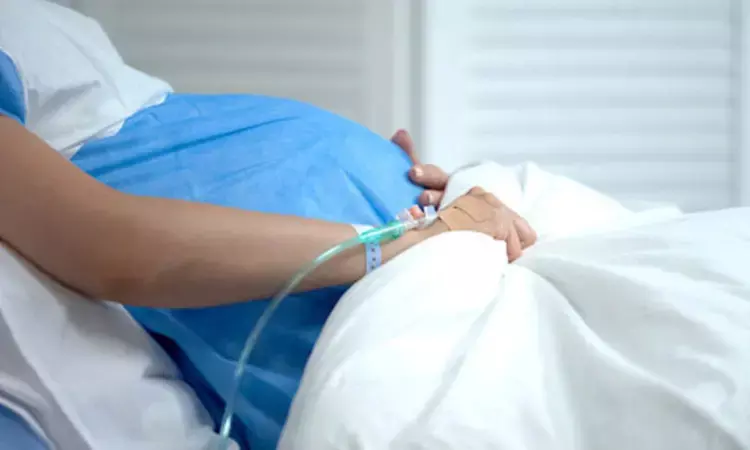- Home
- Medical news & Guidelines
- Anesthesiology
- Cardiology and CTVS
- Critical Care
- Dentistry
- Dermatology
- Diabetes and Endocrinology
- ENT
- Gastroenterology
- Medicine
- Nephrology
- Neurology
- Obstretics-Gynaecology
- Oncology
- Ophthalmology
- Orthopaedics
- Pediatrics-Neonatology
- Psychiatry
- Pulmonology
- Radiology
- Surgery
- Urology
- Laboratory Medicine
- Diet
- Nursing
- Paramedical
- Physiotherapy
- Health news
- Fact Check
- Bone Health Fact Check
- Brain Health Fact Check
- Cancer Related Fact Check
- Child Care Fact Check
- Dental and oral health fact check
- Diabetes and metabolic health fact check
- Diet and Nutrition Fact Check
- Eye and ENT Care Fact Check
- Fitness fact check
- Gut health fact check
- Heart health fact check
- Kidney health fact check
- Medical education fact check
- Men's health fact check
- Respiratory fact check
- Skin and hair care fact check
- Vaccine and Immunization fact check
- Women's health fact check
- AYUSH
- State News
- Andaman and Nicobar Islands
- Andhra Pradesh
- Arunachal Pradesh
- Assam
- Bihar
- Chandigarh
- Chattisgarh
- Dadra and Nagar Haveli
- Daman and Diu
- Delhi
- Goa
- Gujarat
- Haryana
- Himachal Pradesh
- Jammu & Kashmir
- Jharkhand
- Karnataka
- Kerala
- Ladakh
- Lakshadweep
- Madhya Pradesh
- Maharashtra
- Manipur
- Meghalaya
- Mizoram
- Nagaland
- Odisha
- Puducherry
- Punjab
- Rajasthan
- Sikkim
- Tamil Nadu
- Telangana
- Tripura
- Uttar Pradesh
- Uttrakhand
- West Bengal
- Medical Education
- Industry
AI algorithm may predict whether pregnant women will have successful vaginal delivery or not

Mayo Clinic researchers have found in a new study that use of AI algorithm may predict whether pregnant women will have successful vaginal delivery or not.
Further by analyzing patterns of changes in women who are in labor by artificial intelligence can help identify whether a successful vaginal delivery will occur with good outcomes for mother and baby.
The findings were published in PLOS ONE.
"This is the first step to using algorithms in providing powerful guidance to physicians and midwives as they make critical decisions during the labor process," says Abimbola Famuyide, M.D., a Mayo Clinic OB-GYN and senior author of the study.
"Once validated with further research, we believe the algorithm will work in real time, meaning every input of new data during an expectant woman's labor automatically recalculate the risk of adverse outcome. This may help reduce the rate of cesarean delivery, and maternal and neonatal complications."
Women in labor understand the importance of periodic cervical examinations to gauge the progress of labor. This is an essential step, as it helps obstetricians predict the likelihood of a vaginal delivery in a specified period of time. The problem is that cervical dilation in labor varies from person to person, and many important factors can determine the course of labor.
In the study, researchers used data from the Eunice Kennedy Shriver National Institute of Child Health and Human Development's multicenter Consortium on Safe Labor database to create the prediction model. They examined more than 700 clinical and obstetric factors in 66,586 deliveries from the time of admission and during labor progression.
The risk-prediction model consisted of data known at the time of admission in labor, including patient baseline characteristics, the patient's most recent clinical assessment, as well as cumulative labor progress from admission. The researchers explain that the models may provide an alternative to conventional labor charts and promote individualization of clinical decisions using baseline and labor characteristics of each patient.
"It is very individualized to the person in labor," says Dr. Famuyide. He adds that this will be a powerful tool for midwives and physicians remotely as it will allow time for transfers of patients to occur from rural or remote settings to the appropriate level of care.
"The AI algorithm's ability to predict individualized risks during the labor process will not only help reduce adverse birth outcomes but it can also reduce healthcare costs associated with maternal morbidity in the U.S., which has been estimated to be over $30 billion," adds Bijan Borah, Ph.D., Robert D. and Patricia E. Kern Scientific Director for Health Services and Outcomes Research.
Validation studies are ongoing to assess the outcomes of these models after they were implemented in labor units.
This study was conducted in collaboration with scientists from the Mayo Clinic Robert D. and Patricia E. Kern Center for the Science of Health Care Delivery. The authors have declared no competing or potential conflicts of interest.
Reference:
Shazly SA, Borah BJ, Ngufor CG, Torbenson VE, Theiler RN, Famuyide AO (2022) Impact of labor characteristics on maternal and neonatal outcomes of labor: A machine-learning model. PLoS ONE 17(8): e0273178. https://doi.org/10.1371/journal.pone.0273178
Dr Kamal Kant Kohli-MBBS, DTCD- a chest specialist with more than 30 years of practice and a flair for writing clinical articles, Dr Kamal Kant Kohli joined Medical Dialogues as a Chief Editor of Medical News. Besides writing articles, as an editor, he proofreads and verifies all the medical content published on Medical Dialogues including those coming from journals, studies,medical conferences,guidelines etc. Email: drkohli@medicaldialogues.in. Contact no. 011-43720751


